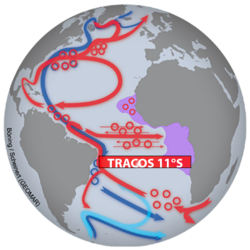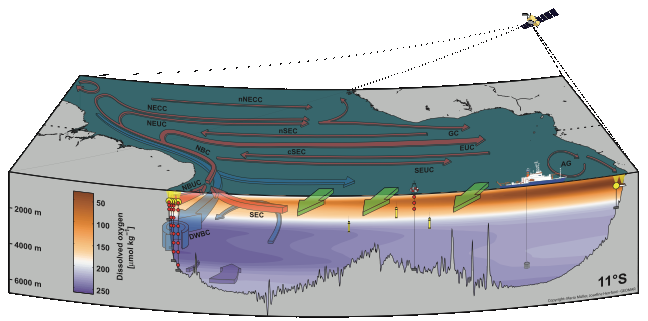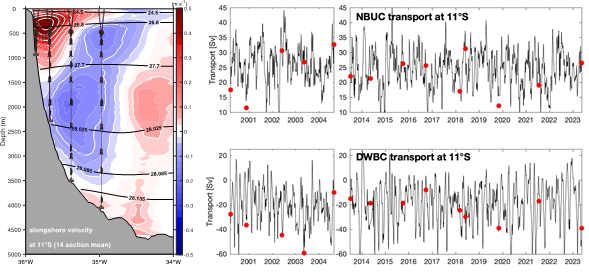TRACOS (Tropical Atlantic Circulation and Overturning at 11°S) array
The TRACOS (Tropical Atlantic Circulation and Overturning at 11°S) array at 11°S between Brazil and Angola consists of ship and moored observations as well as pressure inverted echosounders at the western and eastern boundary. It is located in the tropical Atlantic where the upper-ocean circulation is a complex superposition of thermohaline and wind-driven flows. The zonally and vertically integrated upper-ocean meridional flow is associated with the upper branch of the Atlantic Meridional Overturning Circulation (AMOC) — a major component of the global climate system. In the tropics, the northward AMOC flow is superimposed by the shallower overturning associated with the wind-driven Subtropical cells (STCs). One of the key regions in the tropical Atlantic is the western boundary current system off Brazil. This region serves as a crossroads for the meridional transfer of mass, heat, and salt between the Northern and Southern hemisphere. The eastern boundary serves as a gateway for equatorial variability in the Benguela upwelling system: The TRACOS array consists of moorings at the western and eastern boundary and bottom pressure measurements on both sides of the basin in 300m and 500m depth.
Currently measured parameters:
Western boundary: 4 moorings providing U, V, p, T, S and 2 PIES providing p, t
Eastern boundary: 1 mooring providing U, V, p, T, S and 1 PIES providing p, t
Aims of the TRACOS array are to assess:
- Mean and seasonal to decadal variability of WB current system as part of the AMOC and Subtropical Cells
- Intraseasonal variability of the WB current system incl. deep eddies
- Mean and intraseasonal variability of the EB current system
- Remote forcing of the equatorial region on upwelling intensity along the southwestern African coast
- Variability and uncertainty of the upper branch of the AMOC
- Model validation
Western Boundary Transport:
At the western boundary, the warm water return path of the AMOC and STCs is concentrated in the North Brazil Under Current (NBUC). The cold water path of the AMOC is mainly associated with the Deep Western Boundary current (DWBC) which breaks up into eddies at about 8°S.
Eastern Boundary Transport:
At the eastern boundary, 11°S is located in an upwelling system, in which sea surface temperatures drop seasonally and nutrients are brought into the euphotic zone, sustaining a highly productive ecosystem. The Angola current itself is characterized by a weak mean but variable flow.
 |
| Transport time series of the Angola current meridional transport for the upper 200 m depth. Yellow dots indicate ship section transports. Update from Kopte et al. (2017). |
Basin-wide Transport:
The geostrophic meridional transport in the upper 1200 m across the basin can be derived from bottom pressure anomalies at the western and eastern boundary and sea-level anomaly data. Ekman and geostrophic transport together approximate the net transport which is associated with the transport of the upper branch of the AMOC.
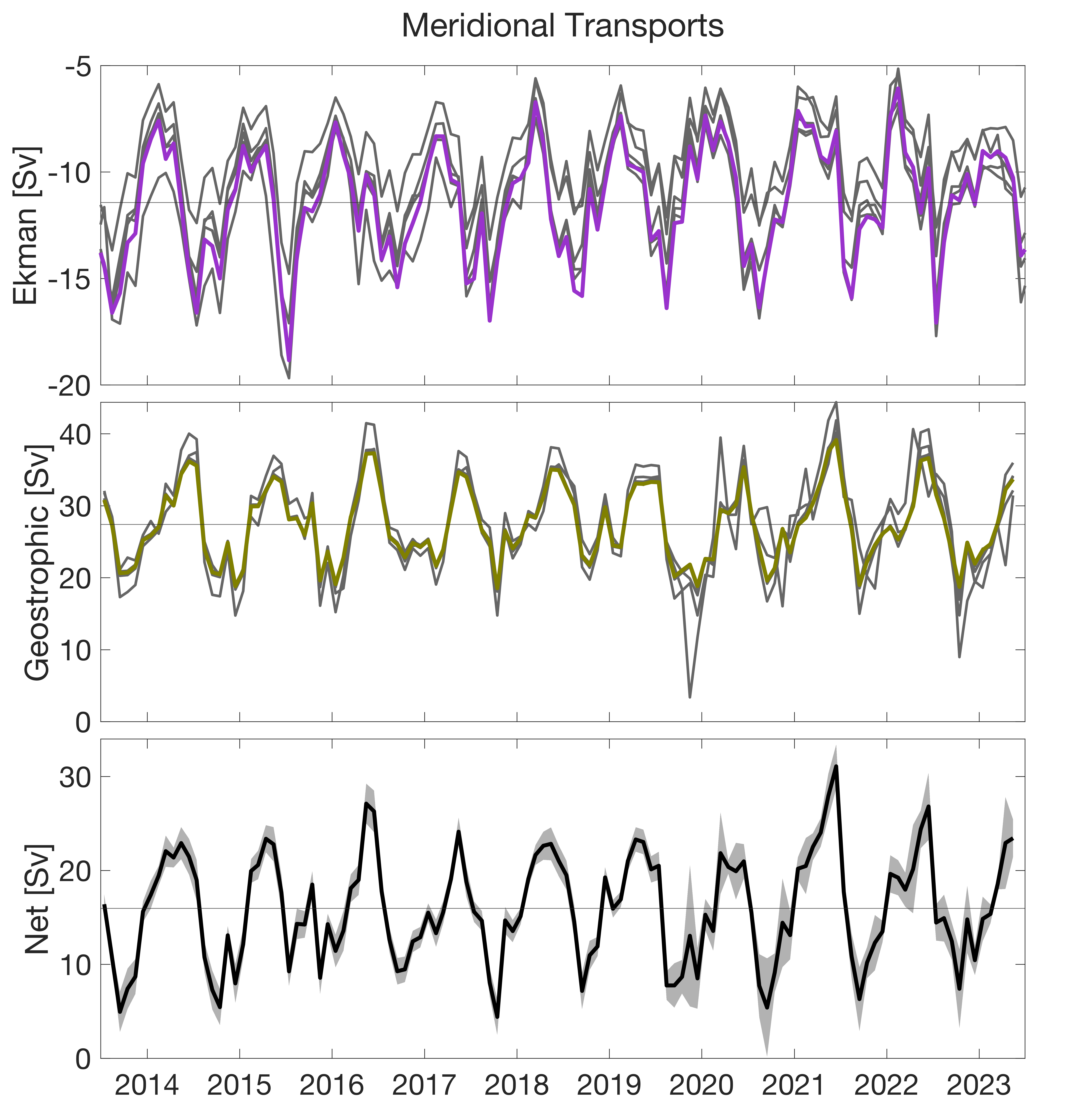 |
|
Basin-wide AMOC transport time
series in the upper 1200m. Results from different
assumptions or data sets are
indicated with the grey lines. Based on
Herrford et al. (2021). |
Maintenance cruises:

Related publications:
- Hummels et al. (2015). Interannual to decadal changes in the western boundary circulation in the Atlantic at 11°S, Geophysical Research Letters.
- Kopte et al. (2017). The Angola Current: Flow and hydrographic characteristics as observed at 11°S, J. Geophys. Res. Oceans.
- Herrford et al. (2021). Seasonal variability of the Atlantic Meridional Overturning Circulation at 11°S inferred from bottom pressure measurements, Ocean Sci.
- Tuchen et al. (2022). Transports and Pathways of the Tropical AMOC Return Flow From Argo Data and Shipboard Velocity, J. Geophys. Res. Oceans.
Projects:
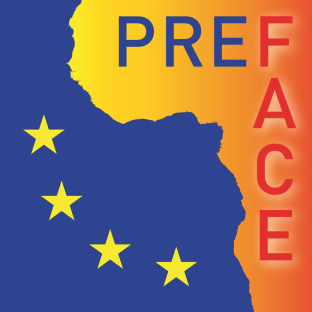 |
 |


